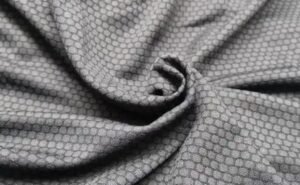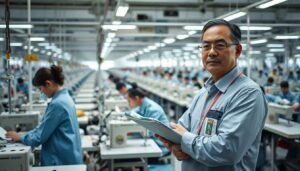
What kind of fabric is linen?
Linen is a natural textile, made from the fibers in the linen plant. One of the long history of textiles, humans have used it for thousands of years. Linen is durable, absorbent, breathable and other characteristics of humans in clothing and furniture items are widely used.
Linen plants grow in cool, moist climates, the fiber is extracted from the plant, after processing in becoming the product people need. The process involves soaking the fibers in water to soften them, and then separating the long fibers from the short fibers. The long fibers are then spun into yarn and used to weave linen fabrics.
Linen is known for its rough touch. This touch is caused by the irregular fiber rules in the linen plant, compared with other plants to give it character. Linen is known for its ability to absorb moisture, which makes it a popular choice for clothing and bedding in warm climates.
One of the main advantages of linen is its durability. Linen is stronger than cotton and can withstand many wear and tear without showing signs of aging. It is also naturally anti-bacterial and it is one of the best choices for people who are prone to allergies.
Linen is available in a wide range of colors and patterns, from natural beige to bright shades. It is commonly used for tablecloths, napkins and other home décor items, as well as clothing such as shirts, pants and dresses. Overall, linen is a versatile and durable fabric that has been prized for thousands of years for its unique qualities.

What are the 7 types of linen?
There are several types of fabrics that are commonly referred to as “linen,” but technically, linen is a fabric made from the fibers of the flax plant. Here are seven types of fabrics sometimes referred to as linen.
- Cotton and linen blend: A blend of cotton and linen fibers that combines the softness and breathability of cotton with the durability and texture of linen.
- Irish Linen: Irish Linen is a linen fabric that has been produced in Ireland for hundreds of years. It is known for its high quality and durability and is often used for tablecloths, napkins and handkerchiefs.
- Belgian linen is a type of Belgian linen known for its softness and drapability. It is widely used to make curtains, upholstery and clothing.
- Hemp: Hemp is a fabric made from the fibers of the hemp plant, similar in texture and appearance to linen made from flax. Known for its strength and durability, it is widely used in apparel and home furnishings.
- Linen-look fabric: Linen-look fabric is a synthetic fabric that mimics the appearance and texture of linen. It is often used for upholstery and curtains, and is usually cheaper than real linen.
- Ramie: Ramie is a fabric made from the fibers of the ramie plant that is similar to linen in texture and appearance. It is known for its strength and durability and is widely used for clothing and household items.
- Washed Linen: Washed linen is a pre-washed linen fabric with a softer, looser texture. It is widely used in the manufacture of apparel and bedding and is valued for its comfort and ease of care.

What are the advantages and disadvantages of linen?
Linen is a versatile and durable fabric made from the fibers of the linen plant. It has been used for thousands of years for clothing, home textiles and industrial purposes. Here are some of the advantages and disadvantages of linen.
Advantages:
- Breathability: Linen is a highly breathable fabric that allows air to circulate and keeps the body cool, making it ideal for summer wear.
- Durability: Linen is a strong fabric that stands up to repeated washing and use, making it ideal for garments that need to be worn for a period of time.
- Absorbent: Linen can absorb up to 20% of its weight in moisture before it feels damp, making it a popular choice for towels, napkins and other home textiles.
- Environmentally friendly: The linen plant requires less water and pesticides than other plants, making linen a more sustainable choice than many other fabrics.
Disadvantages:
- Wrinkling: Linen wrinkles easily, which can be a disadvantage if you want a fabric that always looks stiff and smooth.
- Stiffness: When first purchased, linen can feel stiff and itchy, but will soften with wear and washing.
- Shrinkage: Linen products will shrink when washed or dried, which can make it difficult to maintain the size and shape of clothing and home furnishings.
- Cost: Linen can be more expensive than other fabrics, which makes it unaffordable for some people.
Overall, linen is a durable, breathable and environmentally friendly fabric that can be used for a variety of purposes. However, the tendency to wrinkle and shrink, initial stiffness and higher cost are important factors to consider when choosing a linen product.







